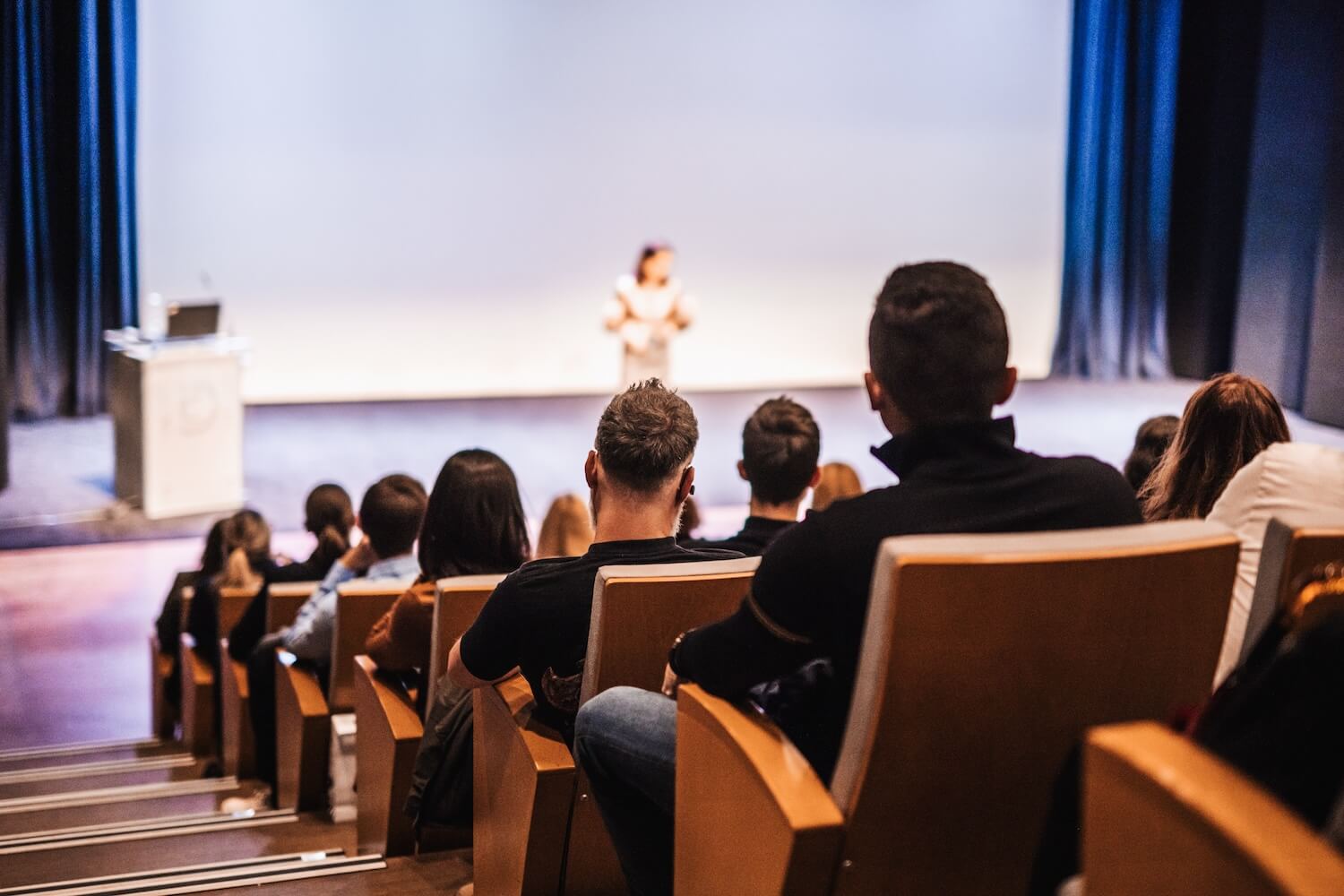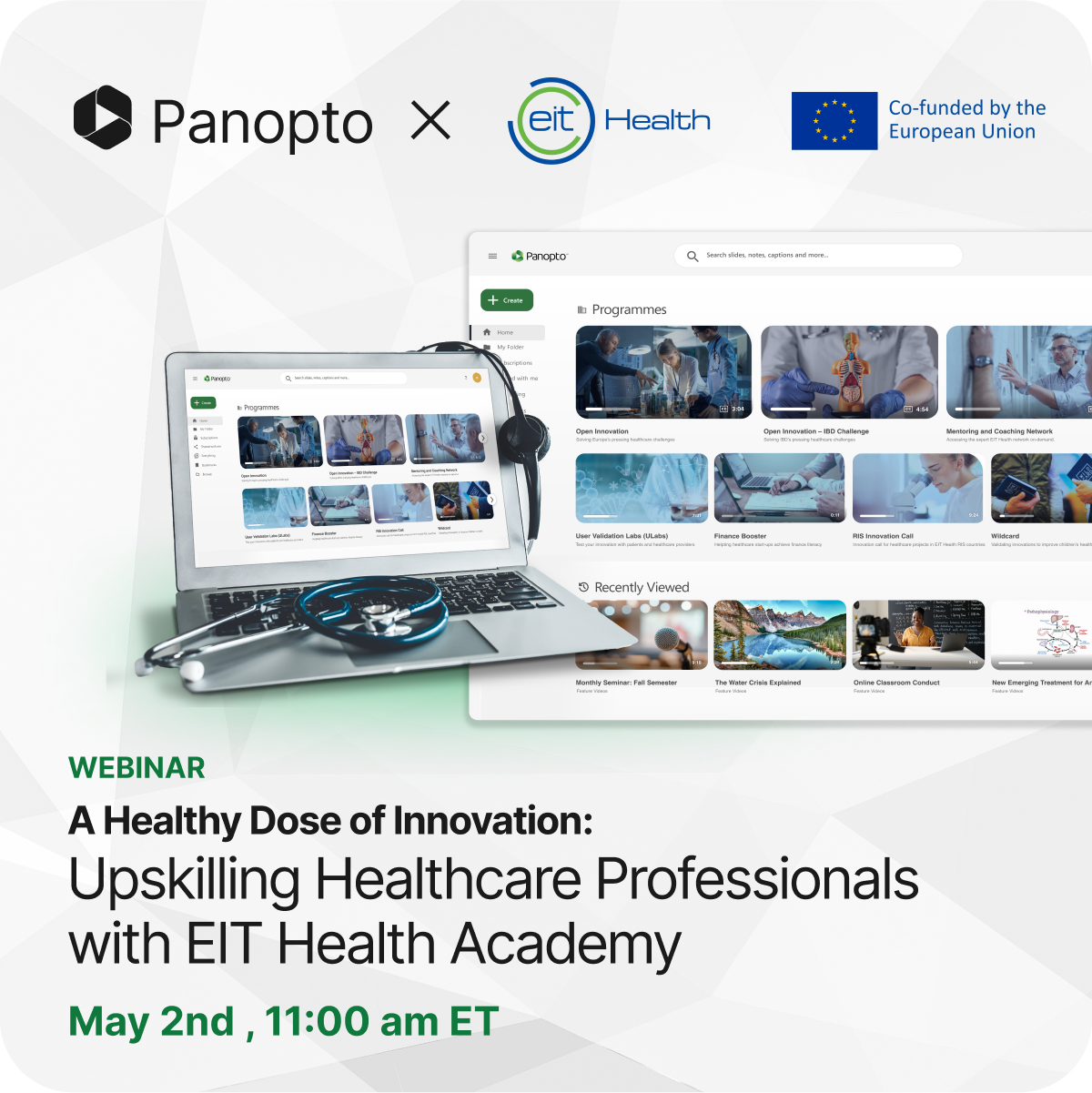Samuel Merritt University
Professors Laud the Benefits of the Flipped Classroom

Achievements
Popular class successfully livestreamed
Students gain control over learning
Increased equity for adult learners
The Challenge
The Information Technology Services (ITS) and Academic and Instructional Innovation (A&II) departments at Samuel Merritt University (SMU) continuously research and adopt new educational technologies to enrich the faculty and student experience. To that end, Marcus Walton, executive director of ITS, introduced Panopto lecture capture to the University in 2015. Initially, the recordings were uploaded to MediaCore.
When MediaCore announced later that year that it would discontinue this service, Elba Rios, a senior instructional designer on Samuel Merritt University’s A&II team, was asked to research the best video management solution for recording, storing, and sharing video content. Panopto was at the top of the list.
Barb Puder, associate professor and chair of the Basic Sciences department, had long wanted to create videos that explained difficult neuroscience topics and were available 24/7 to her students for review. Her vision was to create short 20- to 30-minute videos offering “high-yield information” – the most important points students need to know for exams and future patient care. She envisioned these shorter videos in place of recordings of 50-minute or two-hour lectures.
Panopto made it easier for Puder and her colleagues to bring this vision to fruition.
The Solution
With Rios’s encouragement, Puder was one of the first Samuel Merritt faculty members to use Panopto, and the program allowed her to use a flipped classroom format. While her class had originally met in person for three hours, students were now able to watch an assigned two-hour video on demand – and then meet live virtually for an hour of scheduled class time to ask questions and discuss the topic. She also added her videos to a shared folder in Panopto so her colleagues and their classes could access the content.
Karissa Legleiter, an assistant professor in the Basic Sciences department, started using Panopto in 2020. She worked with Rios’ team to record her anatomy lectures as videos for students to watch at home. “I would use my iPad so that I could draw – pathways, arterial supply, nerve innervation – instead of just talking on the video,” she says. Over time, Legleiter also learned the best ways to organize and edit her videos, improving the quality of her Panopto content.
The flexibility of video has been important for adult learners like those in Legleiter’s classes. “Panopto has allowed adult learners to be able to learn at their home or while their kids [are around] and they can still be present,” Legleiter says. “Students really love that they can watch or listen to the lecture wherever they are. They listen in their car, at the gym. And the biggest feedback I got was that they could stop the video, pause it, and work through the material at their own pace.”
The concept of “universal design” is a crucial focus at Samuel Merritt. Under this initiative, faculty and staff work to create educational materials that are accessible to all. Panopto empowers universal design for faculty and students. “Having the videos accessible is super easy for everyone. It’s easy for teachers. It’s easy for students to access,” says Puder.
With asynchronous video, students who may be hesitant to interrupt a live lecture to ask a question or visit an instructor during office hours can feel free to pause, replay, take notes, or change the playback speed. “A lot of students are intimidated to meet with the professor,” Puder says. “So instead of asking their question or admitting they don’t know, they just won’t ask and then they don’t perform as well. The minute I started making videos, no one came to office hours anymore, even the brave people, because they could get what they needed if they looked back at the video.”
In Legleiter’s courses, students range from having a strong science background to none at all. A traditional live lecture assumes all students are learning at the same pace. “Being able to use Panopto with a lecture or review video lets students work at a pace that’s comfortable for them, which I think is equitable for all. Learning is not one size fits all,” she says. “I think that’s the most equitable thing we can do: put the learning in the hands of the students.”
More specifically, students with speech impediments and visual/auditory learning styles have shared with Legleiter how her Panopto videos help them learn. “We have a lot of new words in anatomy. It’s kind of like learning a new language,” says Legleiter.
“[Students] say, ‘When I have the recordings, it gives me the confidence to listen to the words and say them out loud, and it makes me more confident when coming to the lab or in the future being able to speak to another clinician.’”
Closed captioning gives students the option to read along with the audio, or follow the video without the audio when they don’t want to disturb others. And “when there is an ADA compliance request, we can address it,” says Rios. “We enabled site-wide computer-generated smart captions, so that provides equity. Everyone has access to the content regardless of their learning needs.” The school can also provide professional captioning upon request.
“I love learning and I love teaching. Being able to give every student the ability to learn with Panopto – it’s priceless.”
Karissa Legleiter, Assistant Professor – Samuel Merritt University
The Impact
The faculty and staff at Samuel Merritt have seen the incredible benefits of video and how important it is as they continue to focus on expanding educational equity. “I am very vocal about not going back to the old way of teaching after this,” says Puder. “I don’t think I will give a stand-in-front-of-the-podium lecture probably ever again. I feel like this way is more effective for students.”
Students are demanding video. Now that they have access, they want more. “[This generation of students is] always on their phones,” Puder says. “They’re going to look up a video on how to do something. That’s how they learn.”
Legleiter echoes the need and demand for video moving forward. She sees how Panopto creates a richer learning environment for her students. Even when students don’t have access to the physical classroom or the resources to get to campus, video makes learning possible.
“Everyone should have the ability to learn if they want to. Panopto makes that realistic for people,” says Legleiter. “I love learning and I love teaching. Being able to give every student the ability to learn with Panopto – it’s priceless.”





